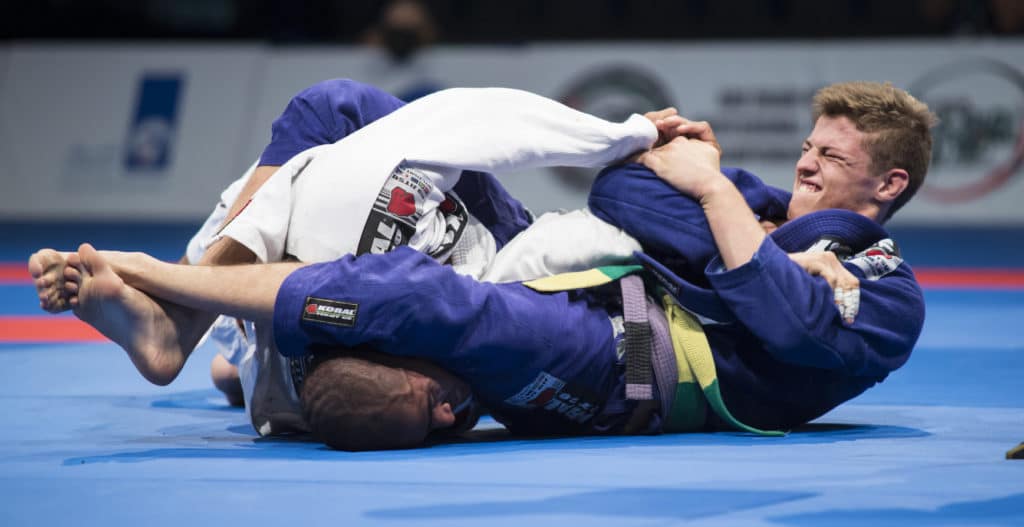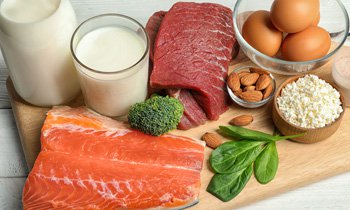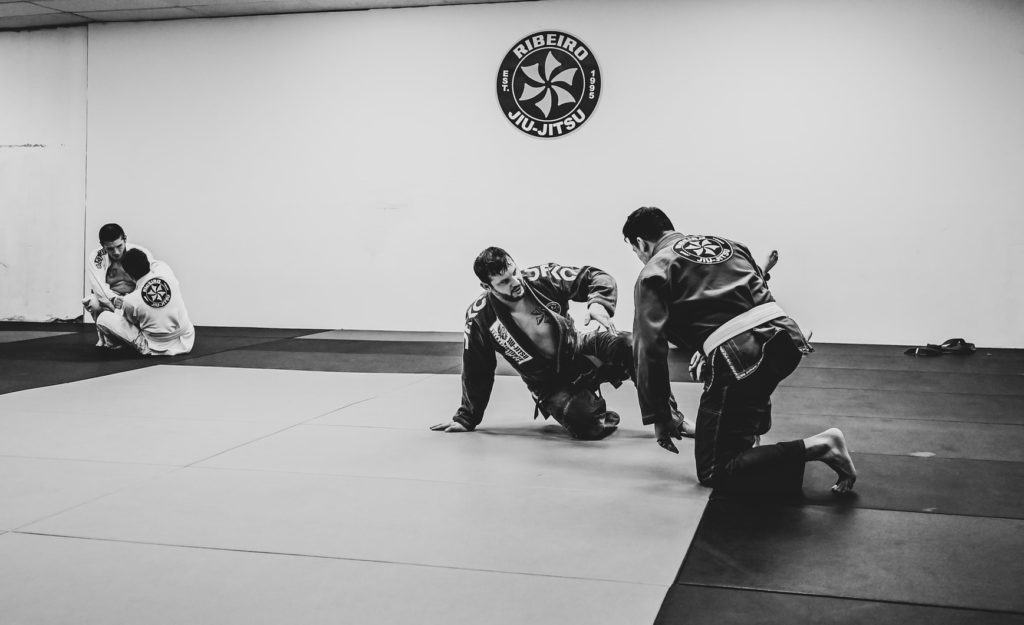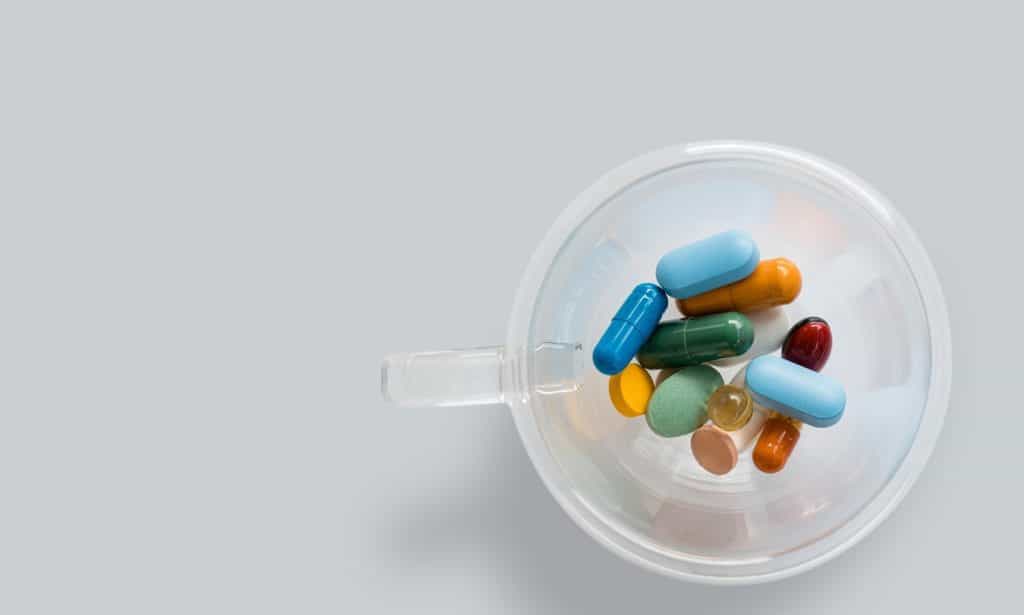
As a Jiu Jitsu practitioner, everything you’ve heard about diet is probably wrong.
The majority of nutrition advice pumped out through mainstream media and social media is targeted toward people looking to lose weight.
A diet to perform and a diet to lose weight are vastly different. While achieving a great physique is a nice byproduct of jiu jitsu, your nutritional needs are far different from an individual at the gym doing bench presses and curls.
This guide will provide you with the step by step instructions to determine how much, when, and what you should be eating to improve your endurance and performance on the mats. After all, it would be a shame to be so dedicated to the craft and master your technique only to gas two minutes into a roll due to a poor diet.
How Many Calories to Consume
Far too often people put the cart before the horse and look into what foods they should be eating rather than how much. Before making any food choices you have to determine how many calories and macronutrients you should be consuming on a daily basis.
Calories are the basic unit of energy that measure not only the food you take in, but the energy you burn via exercise. The equations below are a simple, yet accurate measure of determining your calorie needs.
First take your bodyweight in pounds and multiply it by ten. For simplicity let’s use the example of a 170lb male jiu jitsu practitioner. For the women reading, these equations work for you as well, no changes needed. This equation will give a rough estimate of your basal metabolic rate (BMR).
BMR is a measure of the calories burned by simply keeping the body functioning. Even when you’re sleeping or sitting around doing nothing, the body burns calories keeping organs and cells healthy, blood circulating, among other processes.
(Bodyweight) x (10) = BMR
(170) x (10) = 1,700 calories
Since you aren’t lying in a comatose state all day, your calorie needs are much higher than 1,700. This is simply step one in the process.
You’re moving about your daily life in addition to training on a regular basis. As a result, we have to multiply that BMR number by an activity metric. This will determine your Total Daily Energy Expenditure (TDEE) and thus how many calories you should be consuming overall.
There are many TDEE calculators online but I feel they greatly overestimate how many calories a person needs. Their activity metrics are very vague and hard to choose from. In addition, they are typically geared towards weightlifters rather than BJJ practitioners.
The activity metrics below were created specifically for jiu jitsu athletes. Choose the number that best aligns with your current training schedule, even if it isn’t exact.
Calculating Calories Based on Jiu Jitsu Training Level
1.4 = 3 BJJ Training Sessions per week, No Strength and Conditioning
1.5 = 3 BJJ Training Sessions per week, 2 Strength and Conditioning Sessions
1.6 = 4-5 BJJ Training Sessions per week, No Strength and Conditioning
1.7 = 4-5 BJJ Training Sessions per week, 1-2 Strength and Conditioning Sessions
2.0 = 5+ BJJ Training Sessions per week, 2-3 Strength and Conditioning Sessions (a professional competitive grappler)
Let’s say our 170lb grappler is pretty serious about training and goes to class 4-5 times per week with some strength work mixed in. His TDEE will be as follows:
(BMR) x (Activity Metric) = (TDEE or Total Calories Needed)
(1700) x (1.7) = 2,890 Calories
Calculating Macronutrient Intake
Calories are the starting point, not the finish line. We now have to divvy up these calories within a certain ratio of macronutrients, a.k.a. protein, carbohydrates, and fats.

Protein
While people typically obsess over carbohydrates and fats, protein is actually the most vital macronutrient and where all of your macronutrient calculations should begin.
Protein is the only macronutrient that can build and repair tissue; carbohydrates and fats cannot. When we think of the word tissue most people immediately think of muscle tissue, which is absolutely true. However, connective tissue like ligaments and tendons fall into that category as well. It’s obvious why a grappler would want to keep those connective tissues as robust as possible.
Protein is critical for the immune system as well; another thing to keep healthy when your hobby is literally sweating on another person for an hour.
The standard for protein intake among athletes is one gram per pound of bodyweight. Personally, for a sport as physically demanding as jiu jitsu I wouldn’t mind going a little higher like in the 1.2g/lb range.
For larger individuals carrying more body fat you can go with 0.7-0.8g per pound of bodyweight. If you’re a heavier individual using jiu jitsu as a tool for weight loss, you can also go with one gram per pound of your target bodyweight (i.e. a 300lb individual looking to get down to 250lbs can eat 250g per day).
Going back to our 170lb grappler example, if he’s eating 1.2g of protein per pound of bodyweight then he will be consuming 204g per day.
1 gram of protein = 4 calories
So 204g = 816 calories from protein
Taking our TDEE of 2,890 calories – 816 calories devoted to protein, we now have 2,074 to distribute amongst carbohydrates and fats.
Carbohydrates
No nutrient has been demonized in recent years more than carbohydrates. You can’t go one day without hearing about the evils of grains and sugar. I will assure you right now that our country’s obesity and health issues are far more nuanced than just eating too many dinner rolls.
Carbohydrates are actually the best source of fuel for most physical activity, especially a sport as physically demanding as jiu jitsu.
Brazilian jiu jitsu is a unique sport in that it is almost equally anaerobic (high intensity, short duration excercise) as it is aerobic (low to moderate intensity, long duration exercise).
Most sports lean one way or the other. American football is completely anaerobic. There is about 5-10 seconds of strenuous physical activity, followed by 40 seconds of rest. Long distance running is completely aerobic. It is a steady jog for a long period of time with no sprinting.
Personally, I would argue that jiu jitsu is more anaerobic, but when you roll for 6-10 minutes, 5 consecutive times without rest it becomes aerobic.
What makes carbohydrates so great for a sport like grappling is that carbs are the only nutrient that can fuel both anaerobic and aerobic activity. No other substrate can do that. Creatine is strictly anaerobic and fats are strictly aerobic. But we have this amazing nutrient in the form of carbohydrates that can do both.
With athletes, I’m usually pretty aggressive with my carbohydrate recommendations. From my experience, the negative portrayal of carbs unfortunately leads many athletes to eat way less than they should. When I add more carbs to their diet, they usually report back to me saying how amazing they feel almost immediately.
With that being said, carbohydrate tolerance varies massively from person to person. But I feel that is often the result of poor food choices (more on that later).
Since our 170lb grappler is extremely active, he will need plenty of carbohydrates to perform and recover from his training. I would recommend he consume two grams of carbohydrates per pound of bodyweight.
170 x 2 = 340 grams of carbohydrates
Similar to protein, carbs are also 4 calories per gram
340 x 4 = 1,360 calories from carbs
2,074 – 1,360 = 714 calories remaining for fats
Fiber
Fiber is technically a carbohydrate but I like to put it in its own category, since you don’t really use much of the energy from fiber for exercise. Fiber is critical for gut health and digestion. Daily intake should range between 20-35g per day for most people. More is not necessarily better as overconsumption can lead to gut issues as well.
For the sake of simplicity we will say that fiber contains zero calories (some fibers have calories but it’s so insignificant that it doesn’t matter) and does not require additional dietary calculations. Just try to hit that 20-35g intake every day and also try to get fiber from multiple food sources.
Fats
While not the primary source of energy for most types of physical activity, fats become important during long duration exercise. The reason is that our capacity to store carbohydrates is quite low. Carbs can be stored in muscle or liver in the form of glycogen, but we can only store about 400-600 grams.
If you are competing or practicing without the opportunity to refuel, fats could come into play as an energy source. While it’s not an ideal energy source, it’s par for the course when performing strenuous activity for such a long period of time.
We’ve alluded to the idea of carbs being a more favorable fuel source for jiu jitsu rather than fats. The reason is because carbohydrates are stored within the muscle cell and can be used for energy very quickly. For example, if you are synching up a guillotine choke, you will likely be using the carbohydrates stored in your biceps and shoulders for that submission.
Using fats for energy is much different. Fats have to be released from adipose tissue, circulate the blood, get into the muscle cell that needs it, and finally get into the mitochondria to be converted to energy.
This multi-step process demonstrates why fats cannot keep up with the demands of high intensity exercise and force you to physically slow down.
Regardless, fats are an essential component to any diet. They are vital for hormonal health and the absorption of Vitamins A, D, E, and K.
Our 170lb grappler has 714 calories remaining to use on fats.
Fats are more calorically dense than protein and carbs, as they are 9 calories per gram.
714 calories remaining / 9 calories per gram = Approximately 79g of fat
To summarize, the 170lb male jiu jitsu athlete will be consuming:
Calories: 2,890
Protein: 204g
Carbohydrates: 340g
Fats: 79g
After calculating your calories and macronutrients based on the equations presented in this article, it’s important to take a second and make sure everything looks normal.
Also remember that these are estimations; there are always exceptions and situations where you have to go against the grain (and why maybe you should consider hiring a knowledgeable coach). Some people genetically have fast metabolisms and may need additional calories.
Shameless plugs aside, this is typically a good starting point. Diets aren’t meant to be the same over long periods of time. Don’t be afraid to adjust if you feel you aren’t recovering properly, performing to the best of your ability, having stomach issues, gaining/losing too much weight etc.

Hydrating Properly
I can say with complete confidence that no sport ever made me sweat more than jiu jitsu. As a result, you have to be cognizant of your water intake every day to prevent dehydration and cramping. The slightest bit of dehydration can have massive performance detriments.
A good equation for daily water intake for jiu jitsu athletes is as follows:
.75 x bodyweight in lbs = number of fluid ounces
.75 x 170 = 127.5 fl oz. (for perspective, a gallon of water is 128 fl oz.)
When you sweat, you not only lose water but electrolytes as well. Sodium is something you certainly should not avoid in your diet. I like using pink himalayan salt because it contains other minerals in addition to sodium.
Bananas are probably the first thing that pop in your head when you think of potassium. They’re a decent source, but other foods like greek yogurt, avocados, potatoes and coconut water are actually more potent sources. If you’re drinking coconut water, be sure to get real coconut water and not one from concentrate.
Foods also contain water. Fruits and vegetables have high water content and should be consumed for anyone looking to optimize hydration. Watermelon is called so for a reason, it contains a high volume of water per serving.
Measuring and Tracking Food Intake
I would highly recommend using a food scale to measure your nutrition intake every day, at least in the beginning. People are typically not adept at estimating servings just by looking at food on a plate.
After awhile you’ll become better at eyeballing food on a plate and can track it that way if you choose to. Personally, I don’t think it’s that big of a deal to put my food on a scale for 30 seconds and measure each component of a meal.
MyFitnessPal is still the gold standard for macronutrient tracking. The free version is fine and allows you to customize your calorie and macronutrient targets (don’t go by what they give you, you’ll have to go into the “goals” section of the app to set it yourself).
In the end it would be silly to go through the trouble of calculating your calories and macronutrients, choosing the right foods, only to not track your intake day by day.
Food Choices
Now that the numbers are squared away, we have to fill the diet with… food.
Athletes are in a unique position. On the one hand, they obviously want to consume as much nutrient dense, whole foods as possible to get all the vitamins, minerals, and phytonutrients needed to perform at their greatest potential.
On the other hand, their calorie and macronutrient needs are much higher than the average person. It’s hard to get 3,000 – 4,000 calories or more by eating just chicken, vegetables, fruits, and sweet potatoes. Your stomach would feel full and you wouldn’t be able to roll.
It’s best to implement the 80/20 rule with food choices to satisfy both needs. 80% of your nutrition should come from the whole foods outlined below, while 20% can come from fun stuff like candy, ice cream, and chips to help reach calorie needs.
When making food choices, digestibility is paramount above everything else. Digestibility is a direct signal of how your body tolerates a certain food. If you’re reading about the latest “superfood” but when you eat it you feel bloated and terrible, don’t eat it!
Brown rice is a big culprit of this. People gravitate towards brown rice because they think it’s healthier, but they typically have a hard time digesting it. When I recommend an alternative like jasmine rice to a client they usually have a much easier time with digestion. The nutrient composition of both is so negligible that it’s certainly not worth the trouble of choosing brown rice if it sits in your stomach like a stone.
High Quality Food Options
Protein Sources: Whole Eggs, Chicken Breast, Turkey Breast, Steak, Ground Beef, All Fish, Whey Protein Supplements, Greek Yogurt
Carbohydrate Sources: Potatoes, Rice, Pasta, Fruit, Whole Grains, Oats
Fat Sources: Whole Eggs, Fatty Cuts of Meat and Fish, Nuts, Nut Butter, Avocados, Olive Oil, Coconut Oil, Butter
Fiber Sources: Vegetables, Fruits, Oats, Whole Grains, Beans
Diversity is your friend when it comes to food choices. The color of a fruit or vegetable is often a reflection of the nutrients it contains. A phrase often used in nutrition is “eat the rainbow”, meaning you should consume foods that have a variety of colors.
You may be in a situation where you find it difficult to pack in the calories every day. Your best bet will be to opt for calorie-dense choices like peanut/almond butter for fats, raw honey for carbs, and protein shakes for protein.
Timing Meals Around BJJ Sessions
Mat time is sacred, and the key to progression in the sport of jiu jitsu. As a result, you want to be fueled properly for each training session. My pre-training philosophy is simple: a mix of carbohydrates, fats, and protein 60-90 minutes before training.
Carbs will obviously provide a fuel source for training while protein jumpstarts the recovery process. Fats are key because they slow digestion, allowing a steady release of nutrients into the blood. Having only carbs and protein in the meal leaves you at risk for blood sugar fluctuations and the potential to go hypoglycemic.
Some people train very early in the morning and don’t wake up hungry. I have no issue with training fasted so long as you eat something immediately post training. Remember, digestion is everything. If you train at 5am and wake up without an appetite, it would be silly to force feed food beforehand.
If you train fasted you may want to consider a mixture of essential amino acids with carbohydrate powder. This mimics the nutrients provided in a meal without sitting heavy in the stomach. You can sip this before or during the training session.
Post training is when you want a meal consisting of mainly protein and carbohydrates. This is the one situation where I tell people to hold off on fats and fiber. You want a quickly influx of nutrients especially if you trained fasted or if you plan on training again later in the day.
How many meals you eat in a day comes down to personal preference. I wouldn’t go less than three or more than six, but within that range there doesn’t seem to be much of a difference according to research.

Supplements
Some swear by supplements while others think they’re a complete waste; naturally the true answer lies somewhere in the middle. Ironically I feel that supplements provide a greater benefit to athletes rather than gym rats, despite the fact that they’re marketed more to bodybuilders.
Creatine
Creatine is the most researched supplement on the planet. Unless you are one of the .01% who fall into the category of creatine non-responders I can virtually guarantee that it will work for you.
Creatine is a fuel source similar to the way we use carbohydrates and fats for energy. Creatine fuels high intensity, “all out” exercise because of its ability to create energy in the form of ATP very quickly. In addition, creatine draws water into the muscle keeping it hydrated. These two benefits are the cause of the increases in strength and anaerobic output that you’ll see in much of the research.
Some people use a loading protocol with creatine, taking 20-25g per day for a 5 day period to saturate their muscles more quickly. I am not a fan of this as it commonly causes stomach distress. 3-5g per day every day is just fine for most people. There is no evidence that states you ever have to cycle off of creatine.
You’ll find that there are many different forms of creatine on the market, but most of the research is done in plain old creatine monohydrate. Ironically, one of the most effective and researched supplements in the world is relatively inexpensive. You can find a bottle of creatine monohydrate for about $15 and it’ll last a long time.
Beta Alanine
Beta Alanine is an ingredient commonly found in pre-workout drinks. It is the ingredient responsible for the “tingling” sensation you may feel from these supplements. As alluded to previously, many bodybuilders use beta alanine despite it being more appropriate for athletes.
Beta Alanine is stored in muscle as carnosine, which buffers acid and allows you to train for longer periods. Basically, it increases your muscular endurance. A bodybuilder doesn’t really have to worry about this since their sets are only a few seconds long and they have plenty of rest in between. A jiu jitsu practitioner, on the other hand, would benefit greatly as they basically go nonstop for upwards of an hour or more.
A clinical dose of beta alanine is 3g. As mentioned, you can find beta alanine in many pre-workout supplements (usually dosed appropriately) or on its own.
Multi-Vitamin
You can’t train if you’re sick and jiu jitsu isn’t the most sanitary sport in the world. A multi-vitamin is often called the insurance policy of a diet, filling in any micronutrient gaps your diet may have. No matter how well-rounded your diet is, it is likely lacking in something especially since athletes have greater needs than the general population.
Orange Triad is my go-to multivitamin for myself and my general recommendation for athletes. It has adequate doses of all vitamins and minerals in bioavailable forms. In addition, it contains ingredients for joint health. You’ll find it consistently recommended throughout this website if you look through other articles.
Caffeine
Caffeine is such a part of society that we forget it has performance enhancing qualities. Caffeine is probably the only supplement that rivals creatine in terms of research on its benefits. It has been shown to increase anaerobic output and mental focus.
Some people don’t like to roll after taking caffeine as it makes them anxious, while other people have no issue with it. Typical dose ranges anywhere from 100-400mg depending on your tolerance.
Summary
Some jiu jitsu practitioners familiar with diet may be surprised to see some of the calorie and macronutrient recommendations listed here. It’s important to remember that jiu jitsu athletes are separate from the general population; their nutrition needs are far different due to their activity level.
BJJ is one of the most challenging sports in the world. As a result, fueling properly for workout performance and recovery requires a high volume of nutrient dense foods.
With that said, it’s important to note that the equations listed should be viewed as a range more than a hard line. This is particularly true with carbohydrates. If you feel you are not recovering properly, bump up your carb intake. On the flipside, if you feel sluggish and heavy, consume less or consider different nutrient timing.
At the highest level, where everyone is a seasoned grappler, nutrition can be the difference between winning and losing. You need to squeeze out every benefit from every variable that goes into jiu jitsu training.
Recent Posts
Stretching Before Workouts: Essential Warmup or Performance Killer
“Don’t stretch before workouts, your muscles become too supple” “Stretch before your workouts, warming up is important” It's conflicting advice like this that drives people crazy,...
Best Protein Bar For the Money | Cost Effective, High Quality
Protein bars are no longer a supplement dedicated to diehard gym rats, with awful taste and the consistency of a brick. Men, women, and even teenagers can commonly be seen eating protein bars. The...
